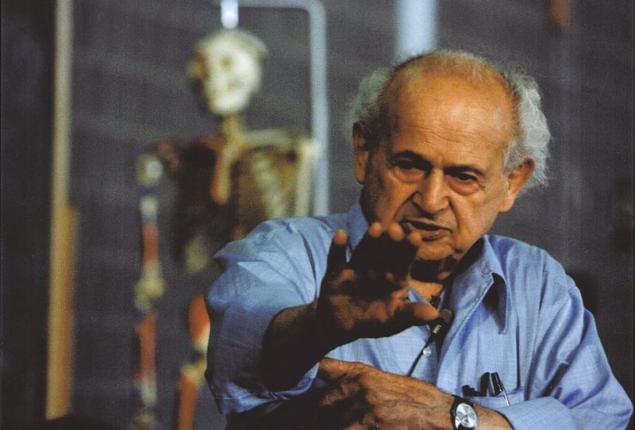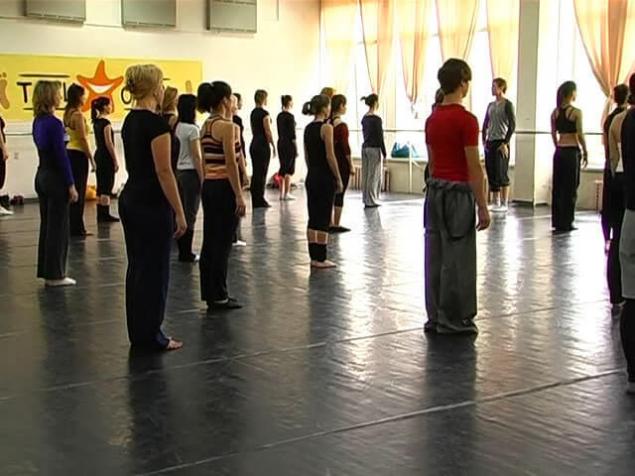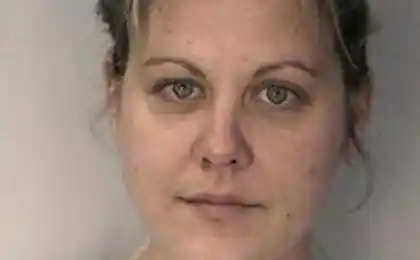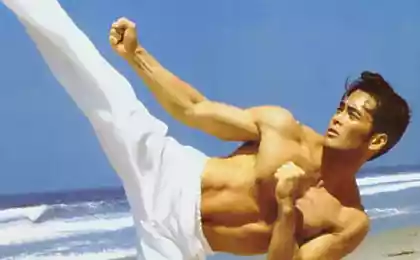529
Elegant aging: rejuvenating the Feldenkrais method
"Old age... starts with self-imposed restrictions in the formation of new patterns of movement. First person chooses a certain attitude and posture corresponding to the position in society, and thus rejects certain actions, such as sitting on the floor or jumping. Subsequently, over time these actions it becomes impossible to perform. The resumption and reintegration of even these simple actions leads to a marked rejuvenating effect not only in the mechanics of body movement, but for the whole of the whole person"
from the book M. Feldenkrais "Body and Mature behavior"

If what we become older is inevitable, many negative attributes that we attribute to old age are not irreversible. Surprisingly, some people manage to save energy and zest for life despite age, while others become old much earlier time. What can we learn from watching those who seem to have found the "fountain of eternal youth"?
I spent many years with Moshe Feldenkrais when he was over seventy, and was deeply impressed by how he was aware of the current situation in politics, science and cultural changes. He was a man of the present, not the past. Feldenkrais was unusually active and productive until a very old age: performed judo techniques, wrote books and travelled the world when he was almost eighty.
Many masters of the performing arts can also be a source of inspiration and example in how to maintain health and vitality. Cellist Pablo Casals, pianist Arthur Rubenstein and conductors Bruno Walter and George Ormandy performed at a high level already when they were over eighty.
Despite the fact that many genetic factors influencing the onset of old age, are outside our knowledge and control, we can do a lot to maintain a sustainable level of vitality and health. The best advice is to stay active and for good reason. People like Feldenkrais and Casals never retired, never stopped working on what they loved the most. It is important to be both mentally and physically active — keep moving.
While the movement does not have to be intense to cause sweating or cause the warming up of muscles and the rise of the pulse. Age-related changes of the cardiovascular system impose limitations: if you like the unusual load, you should find another way to preserve the activity of the body, otherwise you risk getting more problems with muscles and joints.
There is ample evidence that the restrictions in the use of joints leads to structural changes in joints, muscles and other soft tissues, these changes eventually diminish the possible range of motion. This creates a vicious circle, which further leads to an increasing restriction of movement.
One of the ways to break it, and at the same time fascinating and enjoyable way, is the Feldenkrais method.
Those who use your body more fully, have a greater chance to maintain their capabilities throughout life.
If we look at the person walking from afar, on the basis of which we will make a presentation about his age? In posture and gait.
Indicative recent studies on changes in gait of people aged 30 to 75 years. Contrary to the expectations of many, if we exclude the impact of disease and injury, the gait of people of different ages had no differences. Healthy people go in fact it is the same in 35 years, and 75 years.
In our own experience using the Feldenkrais method for people at the age of 60, 70, 80 years usually helps to restore a more youthful gait even those who have accumulated a lot of health problems.
Posture also affects the perception of age:
Staying active and forming healthy habits of the body we can maintain youthful posture and gait to the extent that we allow health. As with gait, the work of Feldenkrais method helps to improve posture for people of all ages, even the elderly.
The main problem, of course, is not how to look young, although in our culture the way we look strongly affects the attitude of others to us. The main thing is that young gait and movement help us to feel young, think young and act young, while enjoying the experience, knowledge and wisdom that come with age.
The reason why the Feldenkrais method is so effective, that many physical limitations that are mistakenly attributed to age are actually the result of insufficient use of the body's capabilities, habits and protective muscle patterns.

Balance, flexibility, posture, gait and ease of movement can be improved even in old age through progressive retraining of how you perform basic movements.
The method Feldenkrais is exercise on a soft and careful execution of a large number of variations of different simple movements. The result of the lessons change neuro-muscular patterns and changes occur in the body.
While some forms of physical activity and exercises may not be suitable for older people, the Feldenkrais method, taught by the lessons of Awareness through movement and Functional integration, specifically created in order to help people to remain mentally and physically flexible at any age.
Feldenkrais published audio recordings of a series of lessons for elderly people who can give excellent results in achieving flexibility, improving posture and ease of movement.published
Author: Mark Reese
P. S. And remember, only by changing their consumption — together we change the world! ©
Source: feldy.ru/read/uprazhnenija_dlja_pozhilyh/
from the book M. Feldenkrais "Body and Mature behavior"

If what we become older is inevitable, many negative attributes that we attribute to old age are not irreversible. Surprisingly, some people manage to save energy and zest for life despite age, while others become old much earlier time. What can we learn from watching those who seem to have found the "fountain of eternal youth"?
I spent many years with Moshe Feldenkrais when he was over seventy, and was deeply impressed by how he was aware of the current situation in politics, science and cultural changes. He was a man of the present, not the past. Feldenkrais was unusually active and productive until a very old age: performed judo techniques, wrote books and travelled the world when he was almost eighty.
Many masters of the performing arts can also be a source of inspiration and example in how to maintain health and vitality. Cellist Pablo Casals, pianist Arthur Rubenstein and conductors Bruno Walter and George Ormandy performed at a high level already when they were over eighty.
Despite the fact that many genetic factors influencing the onset of old age, are outside our knowledge and control, we can do a lot to maintain a sustainable level of vitality and health. The best advice is to stay active and for good reason. People like Feldenkrais and Casals never retired, never stopped working on what they loved the most. It is important to be both mentally and physically active — keep moving.
While the movement does not have to be intense to cause sweating or cause the warming up of muscles and the rise of the pulse. Age-related changes of the cardiovascular system impose limitations: if you like the unusual load, you should find another way to preserve the activity of the body, otherwise you risk getting more problems with muscles and joints.
There is ample evidence that the restrictions in the use of joints leads to structural changes in joints, muscles and other soft tissues, these changes eventually diminish the possible range of motion. This creates a vicious circle, which further leads to an increasing restriction of movement.
One of the ways to break it, and at the same time fascinating and enjoyable way, is the Feldenkrais method.
Those who use your body more fully, have a greater chance to maintain their capabilities throughout life.
If we look at the person walking from afar, on the basis of which we will make a presentation about his age? In posture and gait.
- When the human gait, and lightweight, the impression of youth.
- If the pace is slow, constrained, or uncertain — is associated with advanced age.
Indicative recent studies on changes in gait of people aged 30 to 75 years. Contrary to the expectations of many, if we exclude the impact of disease and injury, the gait of people of different ages had no differences. Healthy people go in fact it is the same in 35 years, and 75 years.
In our own experience using the Feldenkrais method for people at the age of 60, 70, 80 years usually helps to restore a more youthful gait even those who have accumulated a lot of health problems.
Posture also affects the perception of age:
- more straight, balanced posture is associated with youth;
- stooped and bent associated with aging.
Staying active and forming healthy habits of the body we can maintain youthful posture and gait to the extent that we allow health. As with gait, the work of Feldenkrais method helps to improve posture for people of all ages, even the elderly.
The main problem, of course, is not how to look young, although in our culture the way we look strongly affects the attitude of others to us. The main thing is that young gait and movement help us to feel young, think young and act young, while enjoying the experience, knowledge and wisdom that come with age.
The reason why the Feldenkrais method is so effective, that many physical limitations that are mistakenly attributed to age are actually the result of insufficient use of the body's capabilities, habits and protective muscle patterns.

Balance, flexibility, posture, gait and ease of movement can be improved even in old age through progressive retraining of how you perform basic movements.
The method Feldenkrais is exercise on a soft and careful execution of a large number of variations of different simple movements. The result of the lessons change neuro-muscular patterns and changes occur in the body.
While some forms of physical activity and exercises may not be suitable for older people, the Feldenkrais method, taught by the lessons of Awareness through movement and Functional integration, specifically created in order to help people to remain mentally and physically flexible at any age.
Feldenkrais published audio recordings of a series of lessons for elderly people who can give excellent results in achieving flexibility, improving posture and ease of movement.published
Author: Mark Reese
P. S. And remember, only by changing their consumption — together we change the world! ©
Source: feldy.ru/read/uprazhnenija_dlja_pozhilyh/
How to overclock the metabolism: the 5 best ways
Deepak Chopra: the 5 principles of radical well-being























